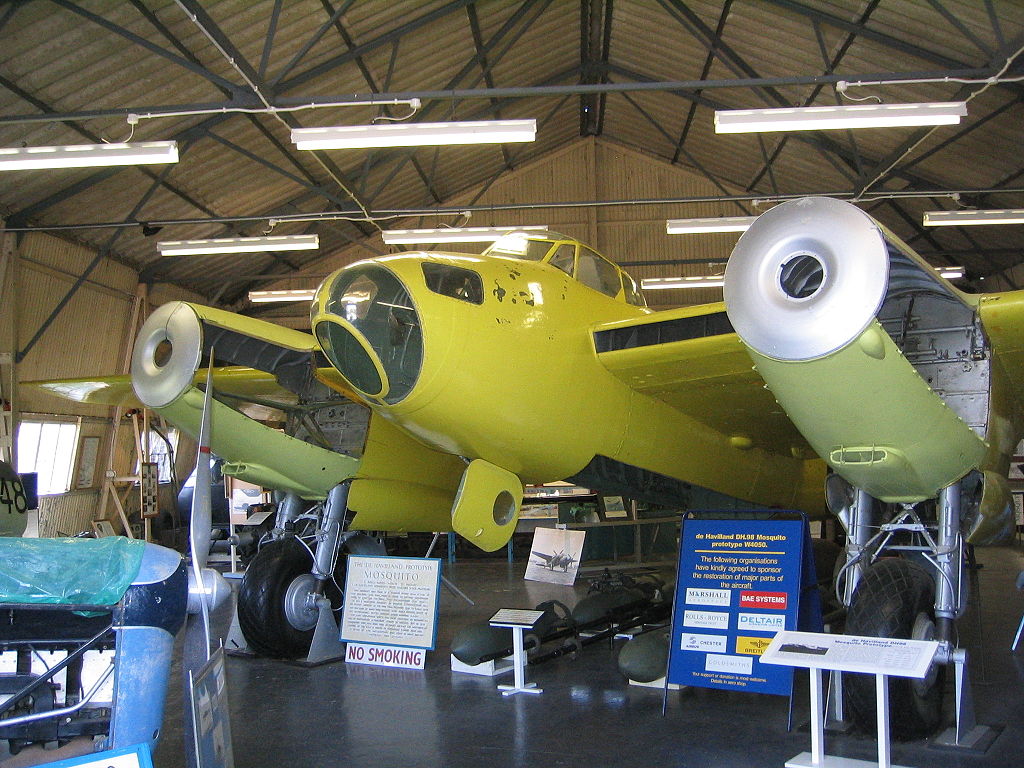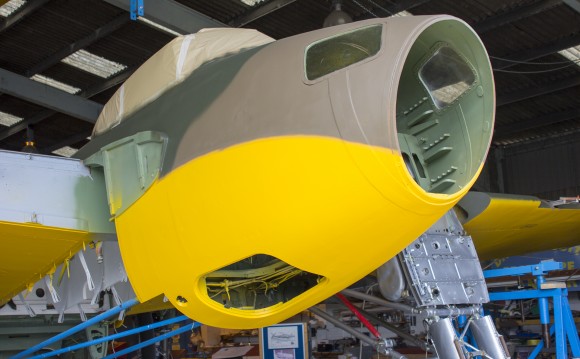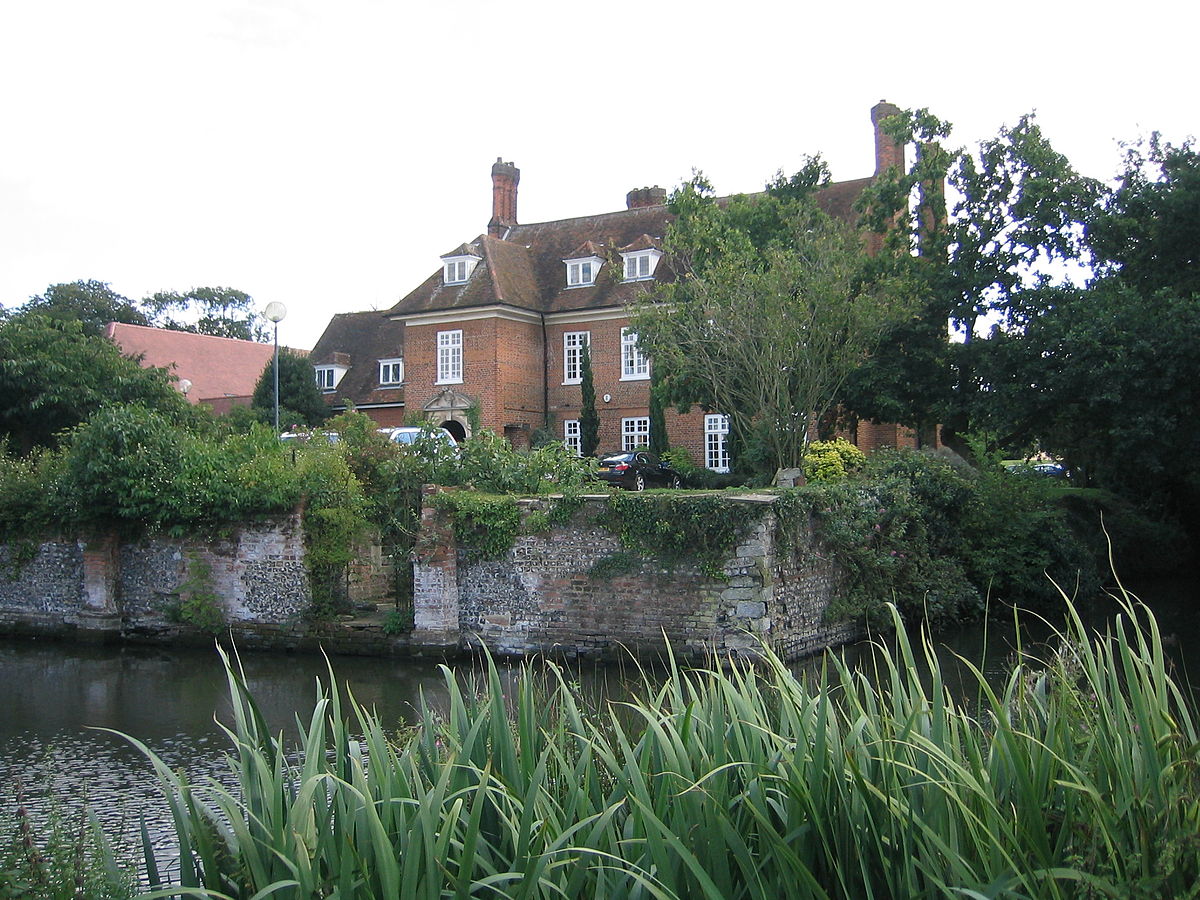
The deHavilland Aircraft Museum, near London, England is an extraordinary aviation museum. Not only does it celebrate one of the most storied and important aircraft manufacturers in the world, but is home to not one, but three DH.98 Mosquitos, including the prototype W4050. Nestled in a hangar on the estate at Salisbury Hall, whose manor house dates back to the mid-1600 and was, for a time, the home of Winston Churchill’s mother, the aircraft is actually on display at its birthplace. deHavilland established the Mosquito’s design team at the residence in 1939; building W4050 and a small number of additional airframes in some of the outbuildings. The aircraft was, of course, transported the short five mile journey by road to deHavilland’s main site in Hatfield for the test flights. And the rest, as they say, is history. The “wooden wonder” went on to become one of the most vital and versatile aircraft deployed by any nation in the entirety of World War II, produced under license on three different continents.
As for Salisbury Hall though, deHavilland left the premises soon after the war, and the house sadly fell into disrepair. However a new owner, Major Walter Goldsmith, took on the task of rebuilding the place in the late 50s. Discovering that the house had a connection to deHavillands, Goldsmith called Bill Baird, then the head of PR at deHavillands to find out more. He was amazed to find that Baird had hidden the prototype Mosquito away in a far corner of the factory grounds in Hatfield, and that it was available to a good home. It was none-too-soon either, as Baird had been ordered to burn W4050 on a number of occasions, although prescient of her enormous historical value, he had always found a way to keep her safe. When Goldsmith called him from Salisbury Hall though, he soon found a willing accomplice to give the national treasure a permanent home, and what better location than her birthplace? And therein lie the roots of what has become the deHavilland Aircraft Museum.

The location has since become home to many other aircraft from the deHavilland stable, including several of the Vampire/Venom series, as well as their most famous biplane designs like the Tiger Moth and a fuselage from their ground-breaking Comet jet airliner and prototype dH.125 still in production today as the Hawker 800 biz jet. There is even a composite fuselage from a Horsa troop transport glider. But by far the most famous resident is Mosquito Mk.I W4050, sitting alongside her sisters FB.VI TA122 and B.35 TA634. The rather forlorn, beheaded fuselage of TT.35 TJ118 is also in storage on the grounds.
Now, in time to celebrate her 75th anniversary this coming November 25th, W4050 is nearing the end of a four-year restoration to ensure she remains in healthy condition for another 75 years, and hopefully many, many more. The restoration/preservation efforts have involved dis-assembling the Mosquito into its component parts for both inspection and repair where necessary. Careful attention has gone into the state of the wooden structure, to assure than any rot or weakness is addressed. The time lapse video below shows the W4050’s wing being lowered from her fuselage during the early stages of the restoration in 2011.
To help leap that last hurdle in the restoration, the deHavilland Aircraft Museum has just received a £41,000 grant from Britain’s Heritage Lottery Fund. “Ensuring the conservation and restoration of the whole range of de Havilland aircraft and preserving the heritage of this Hatfield-based aircraft design and manufacturing company is the central theme of the museum,” said Mike Nevin, marketing director. Robyn Llewellyn, the Heritage Lottery Fund executive responsible for allocating the grant said: “The Mosquito aircraft represents a milestone in Britain’s aviation history and is of national significance. Thanks to National Lottery players we’re pleased to support the restoration of this historic ‘wooden wonder’, particularly in this anniversary year, to secure its future and share its incredible story with an even wider audience.” Readers at WarbirdsNews are bound to agree with that sentiment, and we look forwards to seeing W4050 completed later this year. Many congratulations to the deHavilland Aircraft Museum and their volunteers for a welcome reward for all of their hard work!
The video below is a vintage wartime film describing the design, development and deployment of the Mosquito. It may seem a little quaint in its presentation, but it is fascinating none-the-less, and well worth watching if you have a spare 40 minutes or so…
























